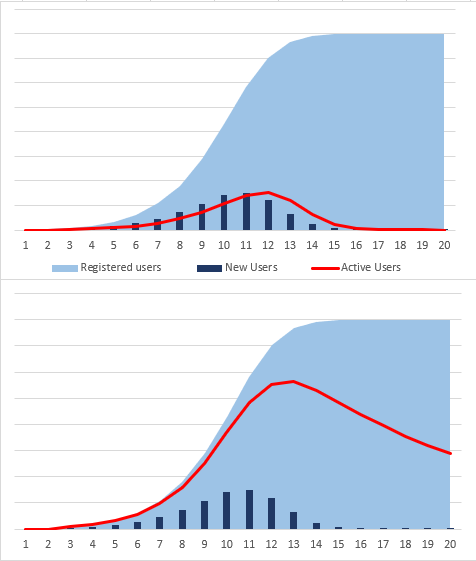- ARPDAUPosted 12 years ago
- What’s an impressive conversion rate? And other stats updatesPosted 12 years ago
- Your quick guide to metricsPosted 12 years ago
The secret to player engagement: never release a sequel

Editorial note from Zoya:
Recently, I was chatting with Kiloo’s Simon Moller (@simonmoeller) about his content strategy for free-to-play games such as Subway Surfers. He argues that rivals such as Glu are misguided for releasing sequels to their successful free-to-play games. Regularly updating existing titles is, in his view, a much better way of ensuring a high rate of retention and monetisation. Or as we would put it, sell emotion not content.
I was interested to hear more from him, because Moller has written some of the most enlightening guest posts on Gamesbrief:
- How To Make $3,000 Per Day From Advertising In Your Free-To-Play Game
- How Kiloo & SYBO Built And Launched A Hit IOS Game In 6 Months
Why do you disagree with sequels to free-to-play games?
If you look at successful Free-to-Play games, they’ve managed to capture and retain their audience over a long period of time. Much like traditional MMO’s and other social games, it’s vital to create an emotional attachment to the game and to the progress players build in the game. To keep players interested, it is of vital importance to give them new meaningful content to interact with.
Sequels work great if the game can be fully consumed, as in traditional boxed-product or digitally delivered Pay-to-Play products. But if a Free-to-Play game can be fully consumed, that’s a flawed design at its very core.
Splitting your userbase with a sequel is particularly bad if your players somehow interact with one another. And all Free-to-Play products should contain ways for your audience to do exactly that.
In short, the “Sequel Strategy” for Free-to-Play games is bastardized between the traditional boxed product world and the new, digital world.
What is your alternative strategy for Subway Surfers?
With Subway Surfers, we left enough room in the original design and IP to add more content, and kept iterating on new feature designs and meaningful ways for players to experience new content without “consuming” it or purchasing it. We monetize through “Vanity” (Characters, Boards), “Power” (Hover Boards, Power-Ups) and advertising sales and give the new worlds away for free to keep the game fresh to players.
We knew the Endless Runner genre retained well and monetized lightly per DAU historically, so we set out to create the freshest experience by updating with new, meaningful content every single month. This required a pretty lean infrastructure that we had to build first – and it wasn’t easy – but it’s paying off bigtime at this point in time.
The product of these efforts is that we’ve seen a dramatic increase in both DAU and MAU every month since releasing. And the game is still growing at a very good rate, without us having to invest anything in direct user acquisition. We’re putting all our time and effort into the product, and trust the users to spread the word. It works.
We’re focusing on the “Players First” strategy – and every time we update it’s required to have enough new stuff to keep players excited about the game – even if they took a break from it at some point. We want to teach players that updating Subway Surfers is worth their time. It’s a very humble point of view towards the people who spend time using our product.
Have you tested this strategy? How do you know that it works?
The strategy works. We’ve experienced that first hand, and all data points to that. Watching the market (as we do quite a lot), an overwhelming percentage of Free-to-Play sequel titles have tanked hard, even if the first title was a large success.
It’s clear that Moller’s strategy is working for Subway Surfers. It is seeing about 25 million DAUs, and has also earned user retention rates that are triple the industry average: on iOS, Subway Surfers keeps 91 percent of users after day one, 81 percent after a week and 60 percent after a full 30 days. The game has been among the top 25 grossing iOS games in the U.S. since December, and frequently breaks into the top ten.











